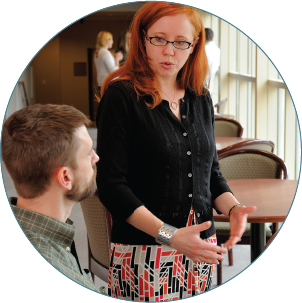Smith's Criminal Case Compendium
Table of Contents
State v. Plotz, COA 23-749, ___ N.C. App. ___ (Aug. 20, 2024)
In this Forsyth County case, defendant appealed his conviction for misdemeanor stalking, arguing a host of issues related to the charging document and jury instructions, as well as ineffective assistance of counsel. The Court of Appeals found no error.
Over the course of 2020, defendant engaged in a series of harassing and intimidating behaviors towards his duplex neighbor, who was a 65-year-old black man. After an argument about yard waste, defendant placed a letter in the victim’s mailbox referencing Section 74-19 of the Winston-Salem ordinances, which requires residents to keep the streets and sidewalks free of vegetation. Defendant began putting milk jugs filled with water in his driveway, with letters written on them that spelled out racial and homophobic slurs. Late at night, defendant would rev up his truck’s engine with the taillights aimed at the victim’s bedroom window, and bang on the wall of the duplex which served as the victim’s bedroom wall. The victim eventually filed charges against defendant, leading to his conviction.
On appeal, defendant first argued error in failing to instruct the jury to the specific course of conduct, which allowed the jury to convict him of stalking under a theory of conduct not alleged in the charging instrument. This led the court to consider whether it was invited error, as defense counsel participated in the discussion of the jury instructions based on the pattern instruction for stalking. After reviewing the relevant caselaw, the court could not establish invited error here. Defense counsel participated in discussion around the jury instructions, but “the specific issue of instructing the jury that its conviction could only be based on the course of conduct alleged in the charging instrument did not arise during the charge conference.” Slip Op. at 14. The court explained that “when a provision is excluded from the instruction and the appealing party did not affirmatively consent to its exclusion but only consented to the instructions as given[,]” the party’s actions do not rise to invited error. Id. at 16. The court then moved to plain error review, finding defendant could not show prejudice as the evidence supported conviction based on the course of conduct alleged in the charging document, and different instructions would not have produced a different result.
Defendant also argued that admitting evidence of conduct not described in the charging document represented the admission of evidence under Rule of Evidence 404(b), and he argued this required a limiting instruction from the trial court. The court disagreed, explaining that defendant did not request a limiting instruction and “the trial court is not required to provide a limiting instruction when no party has requested one.” Id. at 21. Defendant then argued error in instructing the jury on theories of guilt under G.S. 14-277.3A that were not in the charging document, and here, in contrast to the issue above, the court found invited error because defendant “specifically and affirmatively consented to this construction of the charge.” Id. at 23. The court also pointed out that defendant could not demonstrate prejudice, as it was unlikely that the jury would find the defendant put the victim at fear of death or serious injury, but not of further harassment.
Defendant also argued ineffective assistance of counsel, pointing to the alleged errors discussed above. The court dispensed with this part of defendant’s argument by noting he could not establish the prejudice necessary to prevail on an ineffective assistance claim. Assuming counsel had objected to the various issues above, the court determined that the same guilty outcome was likely for defendant. Finally, the court considered defendant’s argument that the evidence was insufficient to support a conviction, determining that evidence of defendant’s “course of conduct . . . combined with evidence of his other actions towards [the victim]” supported the jury’s verdict.


